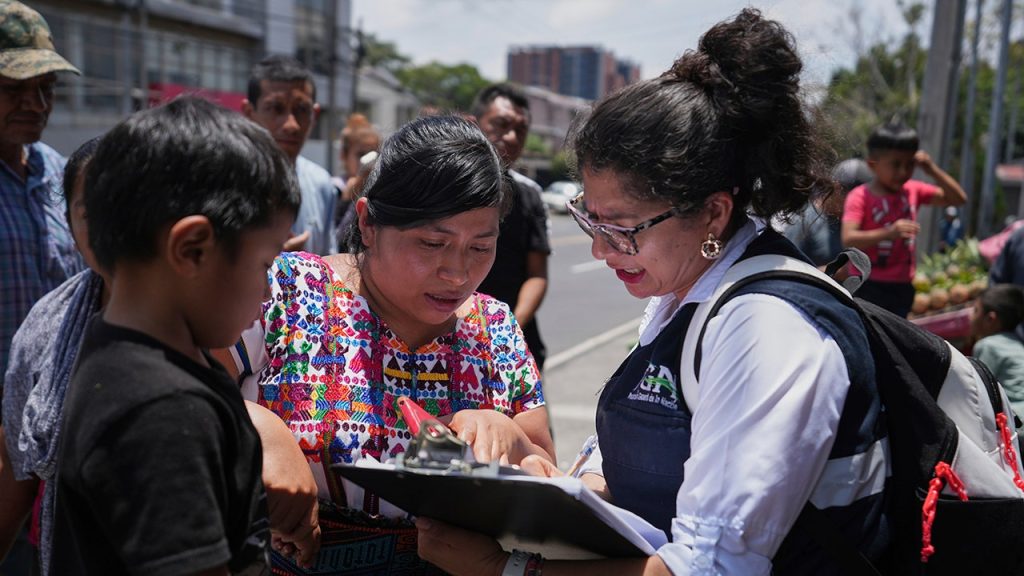Judge Blocks Trump Administration’s Plan to Return Migrant Children to Guatemala
In a dramatic late-night confrontation that unfolded over Labor Day weekend, a Biden-appointed federal judge stepped in to halt what immigrant advocacy groups described as a secretive deportation operation targeting hundreds of undocumented migrant children. U.S. District Judge Sparkle Sooknanan issued an emergency order blocking the Trump administration from flying nearly 700 children to Guatemala, intervening at a moment when some children were already seated on planes awaiting departure. The sudden judicial action has ignited a heated debate about immigration policy, parental rights, and the legal protections afforded to unaccompanied minors who cross the border into the United States.
The clash between humanitarian concerns and immigration enforcement came to a head in the early morning hours of Sunday when advocacy groups filed an emergency lawsuit, LGML v. Noem, just after 1 a.m. The lawsuit named several high-profile Trump administration officials as defendants, including Attorney General Pam Bondi, Department of Homeland Security Secretary Kristi Noem, Health and Human Services Secretary Robert F. Kennedy Jr., and Secretary of State Marco Rubio. The timing of the operation drew particular criticism from Judge Sooknanan, who remarked during the emergency hearing: “I have the government attempting to remove minor children from the country in the wee hours of the morning on a holiday weekend, which is surprising, but here we are.” By this point, charter buses had already delivered children to planes in Harlingen and El Paso, Texas, with some minors already boarded and waiting for takeoff.
At the core of this dispute lies a fundamental disagreement about the nature of the operation itself. Justice Department lawyer Drew Ensign insisted to the court that the flights were not deportations but rather “repatriations” designed to reunite children with parents or guardians who had requested their return to Guatemala. “These are not removals under the statute. These are repatriations. All of these children have parents or guardians in Guatemala who have requested their return,” Ensign explained. The Trump administration has maintained that the program was a lawful reunification effort coordinated with the Guatemalan government, with Guatemala’s President Bernardo Arévalo describing the acceptance of these children as a “moral and legal obligation” for his country. Reports indicated that family members had already gathered at airports across Guatemala in anticipation of the children’s arrival.
Immigrant advocacy groups, however, painted a dramatically different picture of the situation. The National Immigration Law Center’s Efrén Olivares characterized the operation in stark terms, stating that “it is a dark and dangerous moment when our government chooses to target orphaned 10-year-olds.” The lead plaintiff in the case was identified only by her initials—a 10-year-old girl whose mother had died in Guatemala. Advocacy organizations argued that the administration was attempting to circumvent a 2008 law frequently cited to protect minors from removal, and that these children were being rushed out of the country without proper hearings or opportunities to pursue asylum claims. Under normal procedures, unaccompanied children who arrive illegally in the United States are transferred to the Health and Human Services’ Office of Refugee Resettlement while their immigration cases proceed, with many Guatemalan children typically requesting asylum to remain in America.
The dispute highlights the complex humanitarian, legal, and political dimensions of immigration policy, particularly regarding vulnerable children. The Trump administration’s approach reflects its broader emphasis on border enforcement and expedited returns, framing this specific operation as a compassionate reunification of families rather than a punitive deportation. Officials pointed to Guatemala’s willingness to receive the children and the existence of parents or guardians ready to care for them as evidence that the program served the children’s best interests. This perspective aligns with the administration’s stated goals of reducing the backlog of immigration cases and addressing what it perceives as incentives for illegal migration, particularly the migration of unaccompanied minors.
For now, hundreds of Guatemalan children remain in the United States as this legal battle continues through the courts. The case underscores the ongoing tensions between immigration enforcement priorities and humanitarian protections for vulnerable populations—a tension that has defined much of America’s immigration debate for decades. As Judge Sooknanan’s temporary order prevents any immediate removals, both sides will now present more detailed arguments about whether these children should be allowed to pursue their immigration cases within the United States or be returned to Guatemala. The resolution of this case may establish important precedents about the legal rights of unaccompanied minors and the government’s authority to expedite their return to countries of origin, even when family members there have requested reunification. Whatever the outcome, the dramatic midnight legal intervention has ensured that these children’s fates will be decided through deliberate legal process rather than hurried weekend flights.


